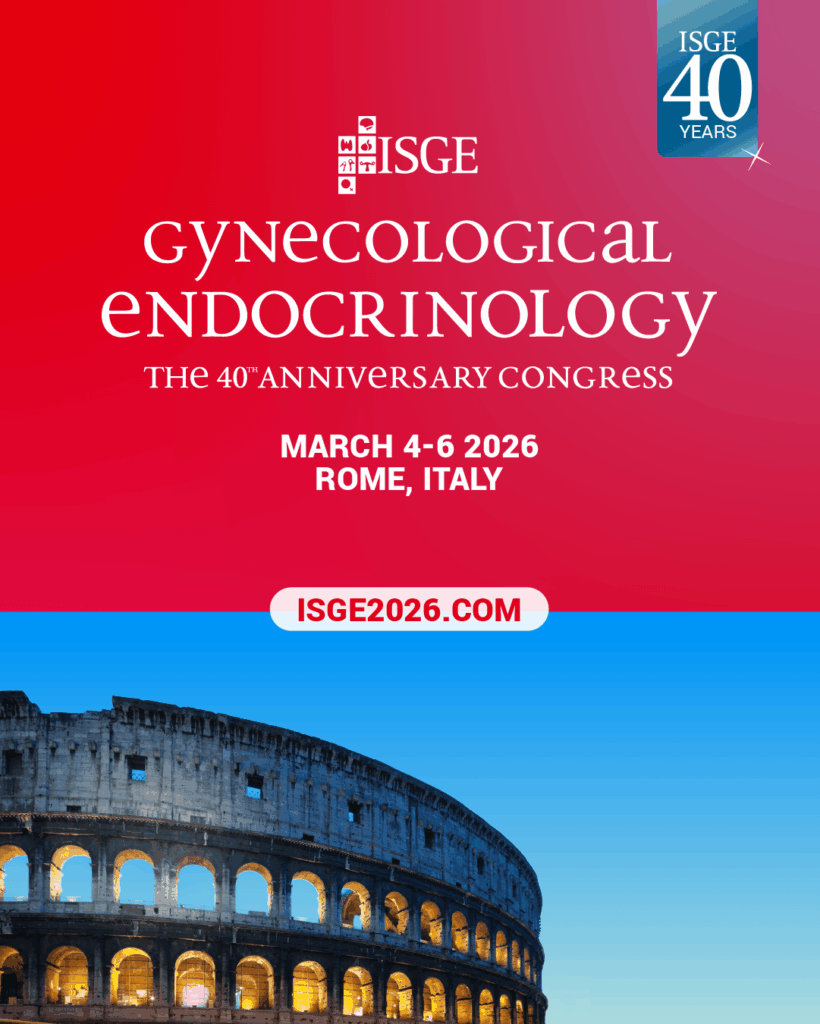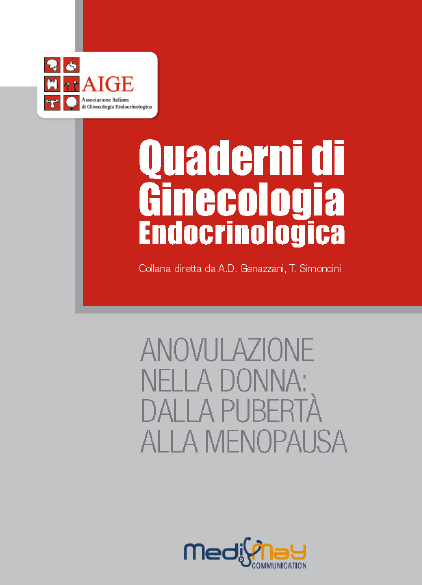-
C. Iavazzo, N. Vitoratos
Polycystic ovarian syndrome and pregnancy outcome
Arch Gynecol Obstet 282: 235-239, 2010Abstract
Introduction Polycystic ovarian syndrome (PCOS) is a common disease of the endocrine system among the women of reproductive age with an incidence ranging from 5 to 10%.
Method This study is a mini-review of pregnancy and perinatal outcome in women with PCOS.
Results The syndrome is associated with increased risk of pregnancy complications such as gestational diabetes, gestational hypertension, preeclampsia, and preterm labor, while no strong association was found with congenital anomalies or spontaneous miscarriages. Furthermore, women with PCOS seem to experience increased risk of cesarean delivery while their newborns face increased perinatal morbidity and mortality. Metformin use seems to reduce the risk of obstetrical complications; however, prospective studies are necessary on the field.
Conclusion Further studies should be organised in order to evaluate the role of PCOS in pregnancy.
scarica il pdf
-
AAA Ewies, F. Alfhaily
Topical vaginal estrogen therapy in managing postmenopausal urinary symptoms: a reality or a gimmick?
CLIMACTERIC 2010;13:405–418Abstract
Postmenopausal estrogen deprivation has been suggested as a risk factor for lower urinary tract dysfunction including stress incontinence, overactive bladder and recurrent urinary tract infection.
These symptoms could have enormous effects on individuals and health-care providers in terms of impact on quality of life and cost. Recent randomized, controlled trials suggested that systemic hormone replacement therapy does have a negative effect on female lower urinary tract function, probably because of the progestogen component. Further, it may be unacceptable for many
women because of concerns about breast cancer or the return of withdrawal bleeding. Topical vaginal estrogen preparations reverse urogenital atrophic changes and may relieve associated urinary symptoms while avoiding systemic and progestogenic effects. This article provides an upto-date overview of the role, effectiveness and safety of topical vaginal estrogen therapy for the treatment of lower urinary tract symptoms in postmenopausal women. -
L. Speroff
Transdermal hormone therapy and the risk of stroke and venous thrombosis
CLIMACTERIC 2010;13:429–432Abstract
Recent case–control and cohort studies have indicated that the transdermal administration of postmenopausal estrogen therapy is not associated with an increased risk of cardiovascular complications, specifically stroke and venous thrombosis. These studies have prompted the clinical promotion of transdermal treatment as ‘safer’. There are reasons, however, to be cautious regarding postmenopausal transdermal hormone therapy, especially in regard to stroke. Previous reports linking postmenopausal estrogen therapy and the risk of stroke have not yielded consistent results, finding it difficult to adjust for all confounding factors, including compliance with treatment. Age of the population studies may be a critical issue. Notably, the risk of stroke with oral estrogen was not increased in the Women’s Health Initiative when women with prior cardiovascular disease or those older than 60 years were excluded. There does appear to be a dose–response relationship with stroke, similar to that observed with estrogen–progestin contraceptives, and this may be a problem when studying standard doses of transdermal treatment, in that many women receiving transdermal estrogen display lower estrogen blood levels when compared with oral treatment. Clinicians should administer low doses of estrogen to women with risk factors for stroke, and the transdermal route of administration is indicated for women at high risk for venous thrombosis and for older postmenopausal women, especially for women with stroke risk factors.
In a recent study, Renoux and colleagues from McGill University in Montreal performed a nested case–control study deriving the data from a cohort of women in the UK General Practice Research Database (GPRD)1. Current use of oral and transdermal hormone therapy, based on recorded prescriptions, was compared to no use in 15 710 cases and 59 958 controls. The adjusted rate ratio (RR) for stroke for current use of transdermal estrogens, with or without a progestin, was not increased (RR 0.95; 95% confidence interval (CI) 0.75–1.20) compared with a significant increase associated with oral estrogen, with or without a progestin (RR 1.28; 95% CI 1.15–1.42). This would amount to an attributal risk of 0.8 additional strokes per 1000 women per year. There was an indication of a dose–response relationship; a significant increase in risk was observed with transdermal estrogen doses greater than 50 mg.
The case-control study by Renoux and colleagues is the first major analysis to compare transdermal and oral hormone therapy and conclude that, compared with an increased risk of stroke with oral therapy, there was no increased risk with transdermal treatment at a dose of 50 mg or less. This report is about as strong an observational study as can be achieved. Large numbers of cases (15 710) and controls (59 958) were available for analysis using the well-known UK GPRD. The use of this computerized database precludes selection bias by the investigators and recall bias by the women in the study. The results support the growing conventional wisdom that transdermal therapy at standard doses is free of the cardiovascular risks associated with oral therapy. -
C. Di Carlo, G. A. Tommaselli, V. Gargano, F. Savoia, G. Bifulco, C. Nappi
Transdermal estradiol and oral or vaginal natural progesterone: bleeding patterns
CLIMACTERIC 2010;13:442–446Abstract
Objective To evaluate the effects on bleeding pattern of two different doses of natural progesterone (NP) administered per os or per vagina in association with transdermal estradiol in a continuous, sequential estrogen–progestin therapy.
Methods A prospective, randomized trial was conducted on 100 patients randomized into four
groups. Each group received transdermal 17b-estradiol treatment at the dose of 50 mg/day. Groups A and B received NP per os at the dose of 100 mg/day and 200 mg/day, respectively. Groups C and D received NP per vagina at the dose of 100 mg/day and 200 mg/day, respectively.Results After 12 cycles of treatment, no significant differences were observed in endometrial thickness between groups, suggesting that all treatments are effective in balancing the effects of estradiol on endometrium. Regarding bleeding control, patients in Groups C and D showed a
higher number of episodes of regular bleeding than patients in Groups A and B and fewer episodes of spotting. The better control of bleeding was associated with a higher treatment compliance in patients who received vaginal NP, with a larger percentage of women completing the study.Conclusion Transdermal estrogen replacement therapy combined with 100 mg of micronized NP administered per vagina from the 14th day to the 25th day of each 28-day cycle leads to good cycle control and provides excellent patient satisfaction without serious side-effects. This therapy could be a treatment of first choice in early postmenopausal patients.
-
Jurgen Spona, Natascha Binder, Kornelia H€oschen, Wilfried Feichtinger
Suppression of ovarian function by a combined oral contraceptive containing 0.02 mg ethinyl estradiol and 2 mg chlormadinone acetate given in a 24/4-day intake regimen over three cycles
Fertil Steril 2010;94:1195–1201Abstract
Objective: To describe the suppression of ovarian function with 0.02 mg ethinyl E2–2 mg chlormadinone acetate administered in a 24/4-day intake regimen in healthy women.
Design: Open, uncontrolled, multiple dosing, phase II trial.
Setting: Single clinic.
Patient(s): Forty women treated.
Intervention(s): Treatment for up to three cycles with 0.02 mg ethinyl E2–2 mg chlormadinone acetate given in a 24/4-day regimen.
Main Outcome Measure(s): Assessments of ovarian function classified by the Hoogland and Skouby score, thickness of endometrium, cervical reaction, and sex hormone levels, as well as overall tolerability.
Result(s): No ovulation was observed in the per protocol set (N=36), and one in the full analysis set (N=38) after vomiting and diarrhea. Absence of ovarian activity, residual ovarian activity, and formation of a luteinized unruptured follicle were observed in 75.0%, 15.9%, and 1.1% of medication cycles, respectively. Endometrial thickness was suppressed to 4 to 5 mm compared with 10 to 12 mm without medication. Cervical reaction was negative. Hormone levels were lower with medication than without, and the medication was well tolerated. Treatment-related adverse events were typical of those associated with hormonal contraceptive use.
Conclusion(s): Follicular development, cervical reaction, and endometrial thicknesswere suppressed profoundly after 0.02 mg ethinyl E2–2 mg chlormadinone acetate administration in a 24/4-day regimen, resulting in inhibition of ovulation and unfavorable conditions for fertilization, implantation, and thus pregnancy -
ISABEL SANTOS1 & STEVE CLISSOLD2
Urogenital disorders associated with oestrogen deficiency: the role of promestriene as topical oestrogen therapy
Gynecological Endocrinology, 2010; 26(9): 644–651Abstract
Urogenital disorders associated with oestrogen deficiency affect many women throughout menopausal transition. Symptoms such as vaginal dryness, burning, pruritus, dyspareunia, urinary tract urgency/frequency and incontinence have a significant impact on the individual’s quality of life. For younger and healthy menopausal women, systemic oestrogen replacement may improve both vasomotor and urogenital symptoms and will be the treatment of choice. However, a proportion of women on systemic therapy still experience symptoms associated with urogenital atrophy, and patients with oestrogen-dependent cancers may be at risk from systemic oestrogen replacement. For women with mainly urogenital symptoms, local oestrogen is a logical choice and it is often more effective than systemic hormone replacement therapy. Generally speaking, there are no contraindications to local therapy. In terms of which topical preparation to use, a wide range of products are available.
Promestriene is an analogue of oestradiol which is minimally absorbed and it has been shown to be effective in reversing atrophic changes caused by oestrogen deficiency in women undergoing natural or surgically induced menopause. Given the absence of systemic activity, promestriene may be a good choice in women requiring purely locally oestrogen, and those who have survived, or who are at risk of breast cancer and who have severe vulvo-vaginal symptoms. -
Dimitrios Mavrelos, Jara Ben-Nagi, Anthony Davies, Christopher Lee, Rehan Salim, Davor Jurkovic
The value of pre-operative treatment with GnRH analogues in women with submucous fibroids: a double-blind, placebo-controlled randomized trial
Hum. Reprod. (2010) 25 (9): 2264-2269.Abstract
BACKGROUND Submucous fibroids are common benign tumours responsible for menorrhagia, subfertility and miscarriage. They can be readily removed by hysteroscopic transcervical resection of myoma (TCRM). To facilitate resection, pre-operative GnRH analogues have been suggested, but the value of this treatment is uncertain. Our aim was to assess the value of pre-operative GnRH analogues for the resection of submucous fibroids.
METHODS This was a prospective, double-blind, placebo-controlled, randomized trial. Women found to have submucous fibroids on three-dimensional saline infusion sonohysterography (3D SIS) were randomized to receive GnRH or placebo. Following treatment patients underwent TCRM by a single operator blinded to the group allocation. Women were followed up 6 weeks after their operation to ascertain resolution of symptoms. The primary outcome measure of the study was completeness of fibroid resection. Secondary outcome measures included the duration of the TCRM, the fluid deficit recorded at TCRM, the resolution of symptoms post-operatively and the number of subsequent fibroid related operations.
RESULTS Forty-seven women were randomized to GnRH or placebo. On the basis of intention-to-treat analysis, there was no significant difference in the number of complete fibroid resections between women who received GnRH analogues [14/24, 58.3% (95% CI 38.6–78.1)] and those who received placebo [16/23, 69.6% (50.8–88.4)] (RR 0.84, 95% CI 0.54–1.29; P = 0.43). Similarly there was no significant difference between the groups in any of the secondary outcome measures.
CONCLUSIONS Our study does not support routine administration of GnRH analogues before transcervical resection of fibroid as we did not identify any benefit in such treatment. -
Jou-Wei Lin, James L. Caffrey, Man-Huei Chang and Yu-Sheng Lin
Sex, Menopause, Metabolic Syndrome, and All-Cause and Cause-Specific Mortality—Cohort Analysis from the Third National Health and Nutrition Examination Survey
J Clin Endocrinol Metab, 95: 4258-4267, 2010Abstract
Objective: This study assessed the mortality risk associated with metabolic syndrome (MetS) for participants from the Third National Health and Nutrition Examination Survey.
Design, Setting, and Patients: The study analyzed mortality data from 1364 men and 1321 women aged 40 yr and older based on their MetS status defined by National Cholesterol Education Program Adult Treatment Panel III. Subjects initially using insulin, oral hypoglycemic, antihypertensive, or lipid-lowering medications were excluded.
Main Outcome Measures: All-cause, cardiovascular, cardiac, and noncardiovascular mortality were obtained from the Third National Health and Nutrition Examination Survey-linked mortality follow-up file through December 31, 2000.
Results: The prevalence of MetS was 33 and 29% for men and women, respectively. In the male subjects, there was no significant association between MetS and mortality. In the women, MetS was an independent risk factor for all-cause mortality [hazard ratio (HR) 1.84, 95% confidence interval (CI) 1.29–2.64, P = 0.001], cardiovascular mortality (HR 1.96, 95% CI 1.21–3.17, P = 0.007), cardiac mortality (HR 1.88, 95% CI 1.15–3.09, P = 0.01), and noncardiovascular mortality (HR 1.80, 95% CI 1.13–2.87, P = 0.01). The HR was stronger when postmenopausal women were analyzed separately and became nonsignificant in the premenopausal cohort. The sex-specific HR remained unchanged, regardless of the MetS criteria used or the inclusion of actively treated subjects.Conclusions: MetS poses a significant increase in mortality risk through an observation period as long as 12 yr, primarily in postmenopausal women, that is not apparent in men and premenopausal women. Sex is an important effect modifier of all-cause and cause-specific death.
-
Didier Dewailly, Pascal Pigny, Benoît Soudan, Sophie Catteau-Jonard, Christine Decanter, Edouard Poncelet, Alain Duhamel
Reconciling the Definitions of Polycystic Ovary Syndrome: The Ovarian Follicle Number and Serum Anti-Mu¨ llerian Hormone Concentrations Aggregate with the Markers of Hyperandrogenism
J Clin Endocrinol Metab 95: 4399–4405, 2010Abstract
Context: It is still debated whether clinical and/or biological indices of hyperandrogenism (HA)
should be present to qualify a patient as having polycystic ovary syndrome (PCOS). We hypothesized that excessive follicle number (FN) assessed by ovarian ultrasonography and/or serum anti-Mu¨ llerian hormone (AMH) concentrations may be used as surrogates for the classical markers of HA.
Design and Methods: Data were obtained from a database of clinical, hormonal, and ultrasound features that were consecutively recorded in 270 women with PCOS (defined using the Rotterdam Criteria) and 217 infertile nonhyperandrogenic normoovulatory women. These variables were submitted to principal component analysis, a multivariable statistical procedure that transforms a number of possibly correlated variables into a smaller number of uncorrelated variables called principal components (PC). Variables that aggregate in the same PC capture the same information.Results: In the control group, as expected, three independent PCs were identified: 1) the markers of the metabolic (i.e. insulin resistance) status; 2) those of the androgen status; and 3) those of the follicle status. In the PCOS group, the metabolic variables also aggregated in a first PC. Ovarian androgen and follicle markers aggregated in a second independent PC, with FN and serumAMH having the strongest correlation coefficients. A third PC summarized the adrenal contribution to the HA of PCOS. In both groups, the free androgen index correlated equally to the first and second PCs.
Conclusions: The similarity of the first PC between controls and PCOS supports the hypothesis that the metabolic anomaly of PCOS is neither intrinsic nor specific. Conversely, by gathering the androgen and follicle variables, the second PC in PCOS may be viewed as summarizing a specific ovarian anomaly. Because both FN and/or serum AMH were strongly correlated to the second PC along with androgens, they may be used equally as surrogates for the classical markers of ovarian HA. This reconciles the Rotterdam Consensus and other definitions for PCOS, especially in women having the Rotterdam PCOS phenotype without HA. We thus propose a simple strategy for the diagnosis of PCOS in clinical practice. -
Claes Ohlsson, Fernand Labrie, Elizabeth Barrett-Connor, Magnus K. Karlsson, Osten Ljunggren, Liesbeth Vandenput, Dan Mellstrom, Åsa Tivesten
Low Serum Levels of Dehydroepiandrosterone Sulfate Predict All-Cause and Cardiovascular Mortality in Elderly Swedish Men
J Clin Endocrinol Metab 95: 4406–4414, 2010Abstract
Context: The age-related decline in dehydroepiandrosterone (DHEA) levels is thought to be of importance for general and vascular aging. However, data on the association between DHEA and mortality are conflicting.
Objectives: We tested the hypothesis that low serum DHEA and DHEA sulfate (DHEA-S) levels
predict all-cause and cardiovascular disease (CVD) death in elderly men.
Design, Setting, and Participants: We used gas/liquid chromatography-mass spectrometry to analyze baseline levels ofDHEAand DHEA-S in the prospective population-basedMrOSSweden study (2644 men, aged 69–81 yr). Mortality data were obtained from central registersandanalyzed using Cox proportional hazards regressions.
Main Outcome Measures: All-cause and CVD mortality by serum DHEA(-S) levels.
Results: During a mean 4.5-yr follow-up, 328 deaths occurred. Low levels of DHEA-S (quartile 1 vs. quartiles 2–4), predicted death from all causes [hazard ratio (HR) 1.54,95%confidence interval (CI) 1.21–1.96; adjusted for traditional cardiovascular risk factors], from CVD (n _ 123 deaths; HR 1.61, 95% CI 1.10–2.37) and ischemic heart disease (n _ 73; HR 1.67, 95% CI 1.02–2.74) but not cancer. Analyses with DHEA gave similar results. The association between low DHEA-S and CVD death remained after adjustment for C-reactive protein and circulating estradiol and testosterone levels. When stratified by the median age of 75.4 yr, the mortality prediction by low DHEA-S was more pronounced among younger (age adjusted HR for CVD death 2.64, 95% CI 1.37–5.09) than older men (HR 1.30, 95% CI 0.83–2.04).
Conclusions: Low serum levels of DHEA(-S) predict death from all causes, CVD, and ischemic heart disease in older men. -
B. Delia Johnson, Kathleen M. Dwyer, Frank Z. Stanczyk, Vera Bittner, Sarah L. Berga, Glenn D. Braunstein, Ricardo Azziz, YuChing Yang, Georgina E. Hale, and C. Noel Bairey Merz
The Relationship of Menopausal Status and Rapid Menopausal Transition with Carotid Intima-Media Thickness Progression in Women: A Report from the Los Angeles Atherosclerosis Study
J Clin Endocrinol Metab 95: 4432–4440, 2010Abstract
Context: The onset of menopause has been associated with an increase in cardiovascular risk
factors. However, little information is available about the rapidity of the menopausal transition
and its relationship to the development of preclinical cardiovascular disease (CVD).Objective: Our objective was to assess whether the rate of carotid intima-media thickness (cIMT) progression over time differs according to 1) menopausal status and 2) rapidity of the menopausal transition.
Design: We evaluated 203 community-based women aged 45–60 yr without previously diagnosed CVD who underwent three repeated measurements of cIMT as a measure of preclinical CVD over 3 yr. Menopausal status was ascertained at each visit based on menstrual cycle parameters and reproductive hormone profiles. Of these, 21 remained premenopausal, 51 transitioned, and 131 were postmenopausal throughout the observation period.
Results: Age-adjusted cIMT progression rates were similar among premenopausal, transitioning, and postmenopausal women. In the 51 transitioning women, age was not related to rate of cIMT progression. However, the rapidity of menopausal transition was related to cIMT progression: women transitioning from pre- to postmenopause within the 3-yr period had a higher rate of cIMT progression compared with women with a slower transition. Statistical adjustments for the significant covariates of systolic blood pressure, body mass index, race, cigarette smoking, orhormone therapy use did not alter the findings.
Conclusions: Among healthy women undergoing repeated cIMT measurement, a more rapid menopausal transition was associated with a higher rate of preclinical CVD progression measured by cIMT. Further work is needed to explore potential mechanisms of this effect
Letteratura scientifica selezionata
-
C. Iavazzo, N. Vitoratos
Polycystic ovarian syndrome and pregnancy outcome
Arch Gynecol Obstet 282: 235-239, 2010 -
AAA Ewies, F. Alfhaily
Topical vaginal estrogen therapy in managing postmenopausal urinary symptoms: a reality or a gimmick?
CLIMACTERIC 2010;13:405–418 -
L. Speroff
Transdermal hormone therapy and the risk of stroke and venous thrombosis
CLIMACTERIC 2010;13:429–432 -
C. Di Carlo, G. A. Tommaselli, V. Gargano, F. Savoia, G. Bifulco, C. Nappi
Transdermal estradiol and oral or vaginal natural progesterone: bleeding patterns
CLIMACTERIC 2010;13:442–446 -
Jurgen Spona, Natascha Binder, Kornelia H€oschen, Wilfried Feichtinger
Suppression of ovarian function by a combined oral contraceptive containing 0.02 mg ethinyl estradiol and 2 mg chlormadinone acetate given in a 24/4-day intake regimen over three cycles
Fertil Steril 2010;94:1195–1201 -
ISABEL SANTOS1 & STEVE CLISSOLD2
Urogenital disorders associated with oestrogen deficiency: the role of promestriene as topical oestrogen therapy
Gynecological Endocrinology, 2010; 26(9): 644–651 -
Dimitrios Mavrelos, Jara Ben-Nagi, Anthony Davies, Christopher Lee, Rehan Salim, Davor Jurkovic
The value of pre-operative treatment with GnRH analogues in women with submucous fibroids: a double-blind, placebo-controlled randomized trial
Hum. Reprod. (2010) 25 (9): 2264-2269. -
Jou-Wei Lin, James L. Caffrey, Man-Huei Chang and Yu-Sheng Lin
Sex, Menopause, Metabolic Syndrome, and All-Cause and Cause-Specific Mortality—Cohort Analysis from the Third National Health and Nutrition Examination Survey
J Clin Endocrinol Metab, 95: 4258-4267, 2010 -
Didier Dewailly, Pascal Pigny, Benoît Soudan, Sophie Catteau-Jonard, Christine Decanter, Edouard Poncelet, Alain Duhamel
Reconciling the Definitions of Polycystic Ovary Syndrome: The Ovarian Follicle Number and Serum Anti-Mu¨ llerian Hormone Concentrations Aggregate with the Markers of Hyperandrogenism
J Clin Endocrinol Metab 95: 4399–4405, 2010 -
Claes Ohlsson, Fernand Labrie, Elizabeth Barrett-Connor, Magnus K. Karlsson, Osten Ljunggren, Liesbeth Vandenput, Dan Mellstrom, Åsa Tivesten
Low Serum Levels of Dehydroepiandrosterone Sulfate Predict All-Cause and Cardiovascular Mortality in Elderly Swedish Men
J Clin Endocrinol Metab 95: 4406–4414, 2010 -
B. Delia Johnson, Kathleen M. Dwyer, Frank Z. Stanczyk, Vera Bittner, Sarah L. Berga, Glenn D. Braunstein, Ricardo Azziz, YuChing Yang, Georgina E. Hale, and C. Noel Bairey Merz
The Relationship of Menopausal Status and Rapid Menopausal Transition with Carotid Intima-Media Thickness Progression in Women: A Report from the Los Angeles Atherosclerosis Study
J Clin Endocrinol Metab 95: 4432–4440, 2010






